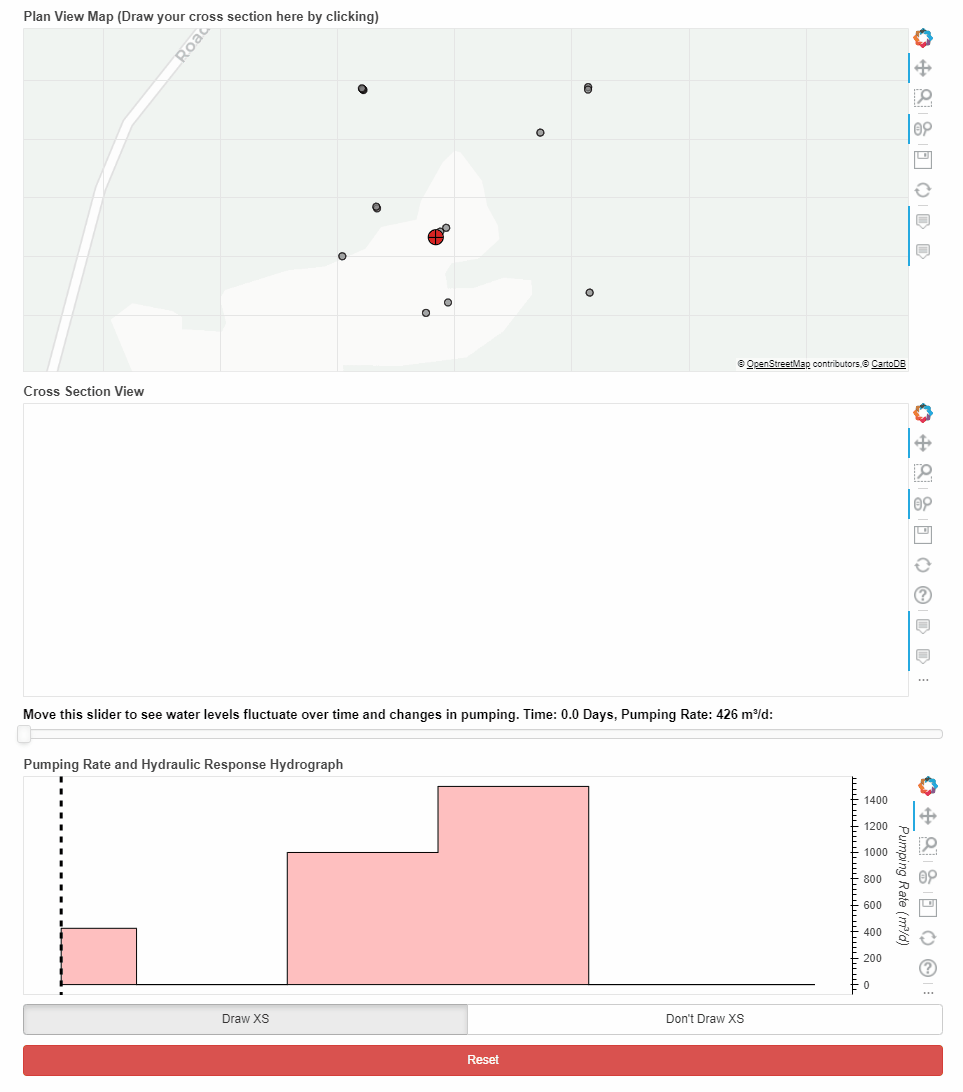Just posting an update I got up on the site now.
I’ve extended the cross section tool to link to transient data! So in this example, a production well (i.e. one that pumps water out of the ground) changes its pumping rates over time. Nearby wells respond with corresponding changes in their water level. The manner in which these wells respond gives hydrogeologists clues about the system they are trying to understand. A fast immediate response usually indicates a direct hydraulic connection from the observation well to the pumped well while a delayed response indicates something else. The magnitude of response and the relative location of the observation well to the pumping well (is it deeper? is it shallower? how far away is it?) tells us something else as well… but I digress. We use this information to help us drive model conceptualization and parameterization… which ultimately is used to assess drinking water quality and quantity risk.
TLDR: Understanding the spatial and temporal distribution of response to pumping is probably ~50% of the hydrogeologist’s job, and this tool is intended to help them with that 

PS → This showcase is brought to you by whichever developer fixed the multiline hover a ways back. THANK YOU!